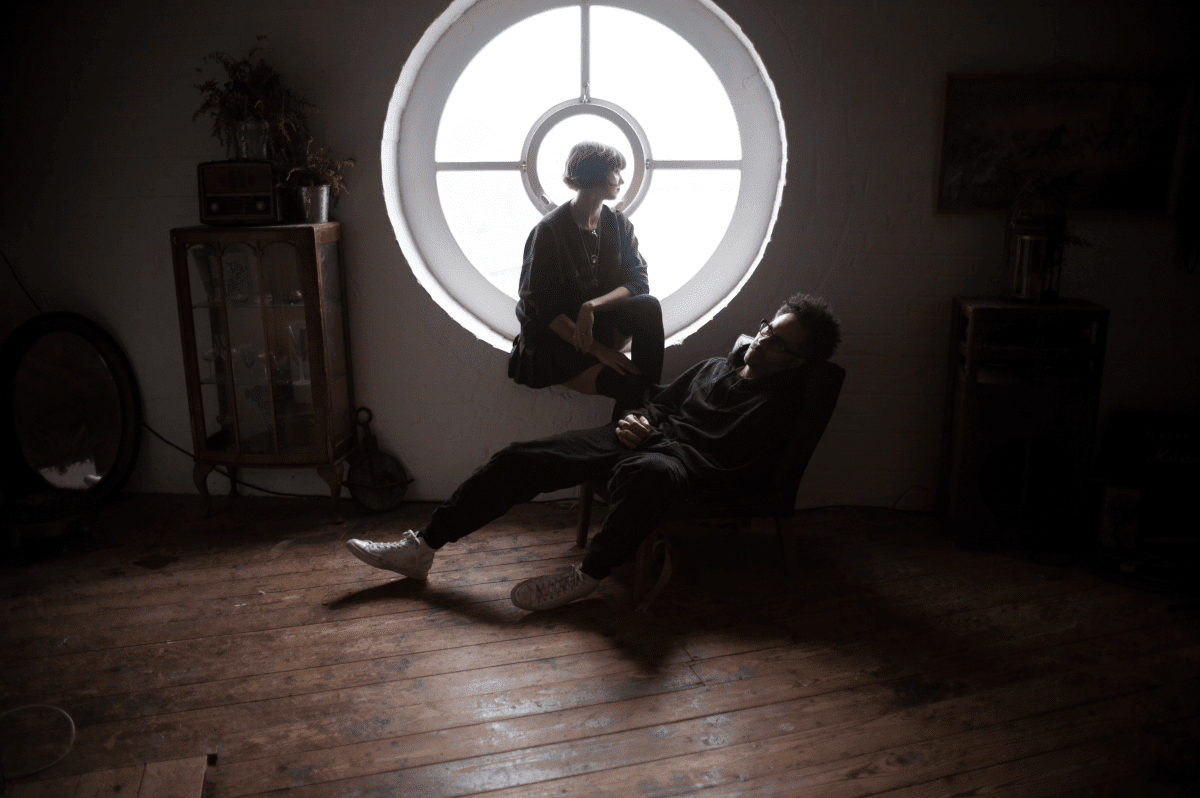Not all too long ago, NYC label Abu Recordings released their third VA, to which we premiered the track "Proton Pump" from label co-founder AXJ2000. We loved the track so much we invited him to break it down for the latest installment of our How It Was Made series. One of the things we love most about techno is how simple a track can be; no frills, just great driving club music. Below, AJX2000 walks us through the tools he used in the creation of "Proton Pump" and provides us with an extremely in-depth look at his process for a new How It Was Made feature.
Words and photos by AJX2000
This song was initially written in August 2018 and it took me a while before coming to release it on Abu Recordings, the label I helped found back in 2016. I wrote “Proton Pump” while I was on a trip to see family in North Carolina, so I didn’t have access to any hardware during the writing stage. I arranged everything in Ableton using samples and relied on two pieces of outboard gear for additional processing in the mixdown. It’s quite a minimalist track overall with just 12 audio channels and two effects sends, having boiled the song down to its most important elements and deleted ideas that I didn’t quite need. This is a process I find really important because I always try to cram too many ideas into a song.
The first thing I created was the pad. This was made by repitching some samples from a Fender Rhodes playing a couple of chords, then running them through Ableton’s stock delay and reverb with some of the signal going out through a flanger on a send track.“The Hunt For Red October” was on TV in the background while I was working on this with my headphones on, and I think the lonely melancholic sound of the pad came from watching the footage of submarines stalking on the bottom of the ocean.
After laying down the drums and the bass line, I knew I needed one more element that would give the second half of the song additional momentum, so I started working on a stab pattern that would achieve something similar to the stab in “Azoui” by Fetnat. What I love about that track is how difficult it is to figure out what the stab is going to sound like the next time you hear it, so I used a midi LFO to randomly modulate the filter cutoff, creating a pattern that constantly evolves. Setting up these automated modulation systems feels like having someone else in the studio with you, and it really helps me to find new sounds I wouldn’t have conceived alone. Those are some of the most exciting moments when you’re producing techno when you let the computer play with you and connect to the cyborg fantasy that originators like Juan Atkins channeled to create the earliest techno tracks.
After arranging everything, I exported the individual tracks to audio stems and opened them in a new Ableton session for the mixdown. At this stage, I added automation and outboard effects, corrective EQ, compression, and glued all the sounds together. Huge thanks are due to my label-partner and friend Paolo Cicilioni for his assistance in the mix – my music would sound awful if it wasn’t for him!
The ARP2600 sampled by Samples from Mars and used in this track to build the kick, snare, and sub-bass, as well as some of the noisy FX which float in the background of the song.

Picking High-Quality Samples
At the start of the production process, I usually make a loop with all the different instruments and sounds I want to have going on in the track. By writing everything together into a loop, I can hear how each element interacts with all the others in the mix right from the outset, and tweak my sample selection to make sure everything sits together nicely. Picking sounds that work together from the outset and don’t conflict with the other elements of the track creates a lot less work further down the line when it comes to the mixdown. It’s also more fun to write music when it sounds relatively good from the outset. I personally love Samples from Mars, and much of this song was sourced from their ARP2600, MKS Poly 2, and Modular Creations sample packs. Also a shout out to Legowelt’s absolutely amazing collection of free samples which are all available on his website and make a few appearances here.
Max for Live
Adding subtle modulation and controlled randomization to your sounds is one of the keys to keeping loop-based music interesting; without it, the ear quickly learns what to expect and gets bored. Ableton and Max for Live offer a suite of really convenient plugins to help with this, such as Ableton’s Velocity or Max’s Midi LFO and Expression Control. Those three tools are used throughout the track to subtly affect different sounds, but they’re most obvious on the constantly morphing stab pattern that comes in at around 3:10. By routing a Max LFO to modulate the filter cutoff of the MKS Poly2 synth, I programmed the computer to ‘improvise’ the pattern by emphasizing or cutting off some of the notes I originally recorded. This turned a boring, static pattern into something a lot more interesting because the listener can’t really predict what the next stab will sound like, or if it will be cut off by the filter modulation.

My Ableton rack for the MKS Poly Synth. The “Filter Freq” knob is grayed out because it is being modulated by the Max for Live LFO MIDI to the left
U-He Satin
This is one of the most versatile plugins I have and I use it on pretty much everything from synth pads to drums. I like to set it up as a send track and use the flange or delay modes to create nice movement and space on static-sounding synths or drums. Applying it directly to audio using the “studio” mode also allows for some really lovely tonal-shaping and adds a lot of warmth to flat sounds.

This is a screenshot of the Satin in flange mode I set up as an effect send on the mixdown of the track. Sending a little signal from hats, pads stabs and other high-pitched elements of the tracks helps add some subtle modulation to those sounds without sounding heavy-handed
Elektron Analog Drive & Tascam Portastudio 424 MKii
For some mysterious reason, a couple of years ago these went on sale for ⅓ of their usual price. I immediately bought one and have used it all the time since then. This pedal is incredibly versatile as a saturation/distortion multi-tool because it has 8 switchable analog circuits and controllable gain. I love re-recording percussion lines through this and then layering them with the original audio in Ableton to create rich, gritty sounds. This layering process also allows you to precisely control the amount of saturation you’re applying and correct any harsh frequencies you couldn’t fix with the Analog Drive’s built-in EQ.
This dirty old tape studio can be a bit of a pain to use: it requires constant cleaning, the tape-flutter wrecks havoc on the playback timing, and I’m always out of new cassettes to record into. But I love it and often use it to add a layer of grit to boring digital sounds when nothing else quite does the trick. On this track, after mixing all the drums to a point where I was satisfied with them, I recorded all the drums onto a cassette with a high input gain to give it some intentionally noticeable tape saturation and compression, then mixed them back with the dry.

The Analog Drive and Portastudio used as outboard effects on this track. Photo: Paolo Cicilioni











